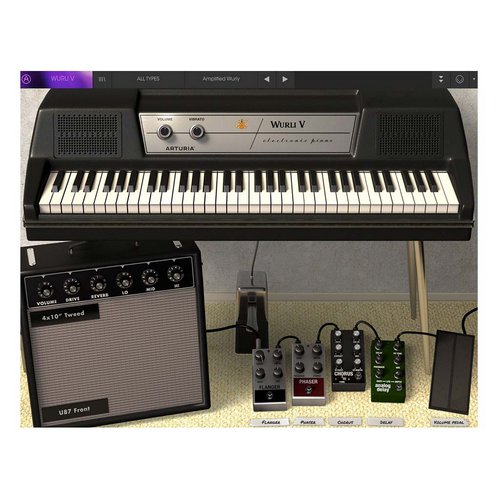

Sonically and visually improved editions of all existing keyboard and synthesizer instruments are included, and the whole package, or upgrade, is available for a special introductory price until June 30th 2016. It includes five new products, making V-Collection one of the broadest collections of vintage synthesizer and keyboard recreations available.
#ARTURIA V COLLECTION 5 VS VINTAGE KSEY UPDATE#
Next time, we will take a look at “Synthi V”, “B-3 V2”, and “AnalogLab 4”.V-Collection 5 is the biggest update to Arturia's flagship software bundle to date - their definitive collection of classic vintage synthesizer and keyboard instrument recreations.
#ARTURIA V COLLECTION 5 VS VINTAGE KSEY UPGRADE#
There is a demo version of the product available, and those who own the previous version can upgrade for a cheaper price as well! Use the various synths on board to improve your workflow and access countless sounds and sonic possibilities. With it’s unique sounds and highly functional presets, it will undoubtedly help elevate your tracks to the next level. We hope you enjoyed this look at “V-Collection 7”. If controlling DCW’s Line2 select “Line 2 DCW”.Ĭlick on “Sync” in the top right to create curves that follow the beat/bars.īy clicking the curve preset on the top right, you can utilize preset curves in your own tracks. There may be instances when you want to sync the curve movement to the tempo in your DAW.Ĭlick on the “Envelope” tab and select “Line 1 DCW”. The higher the curve point the more the DCW knob increases, and when the curve point reaches the highest point, the DCW knob’s amount is also turned to the max. Select the “DCW” tab and draw a curve to add movement to the “DCW”.Ĭurrently, the DCW knob setting is set to the lowest part of the curve. When the knob is raised (turned right), the selected waveform is applied more heavily.īy moving this “DCW”, you can create a tones that change over time. When this knob is at 0 (turned to the left), excluding certain waveforms, the sound will become a regular sine wave. You can combine 2 waves in Line and the current waveform will be shown in the display.Ī key function here is the “DCW ( Digital Control Wave)” knob. There are 2 main Line’s on board that can be controlled individually. The oscillator function in CZ-V is called “Line”. Like Mellotron V, you can use the advance button to customize the synth. Most of the production in the video’s sample track is made using the CZ-V.

“Phase distortion” has been implemented, with a large span of tones that you can dial in. You can drag it to match the keyboard key or you can pull the edges left/right to expand on the performance range. The notes are transposed to the keyboard and the original key is shown in the yellow highlighted areas. Simply drag and drop files to either A/B/C. It allows you to add some Mellotron flavor to your own sounds.

You can input your own original samples (WAV) into Mellotron V as well. This is a useful function for live performance as well. In addition to using the slider on the left to blend a balance different samples, you can use the “ALL” button to maximize the volume of all placed samples.Ĭheck the piano roll displayed below to move/place samples by octaves. You can read up to 3 sound libraries in Mellotron V.

Starting with flutes, Mellotron V has a wide variety of preset sounds on board. “Preset Store”, “Concert mode”, “Find Presets using AI” and more new functions have been added to evolve this tool. Not only can you easy navigate through over 8000 presets, but you can easily make edits and perform functions such as “customizing parameters”, “layer sounds”, and “assign parameters”. A soft synth that allows you to control all sounds in the V Collection.


 0 kommentar(er)
0 kommentar(er)
